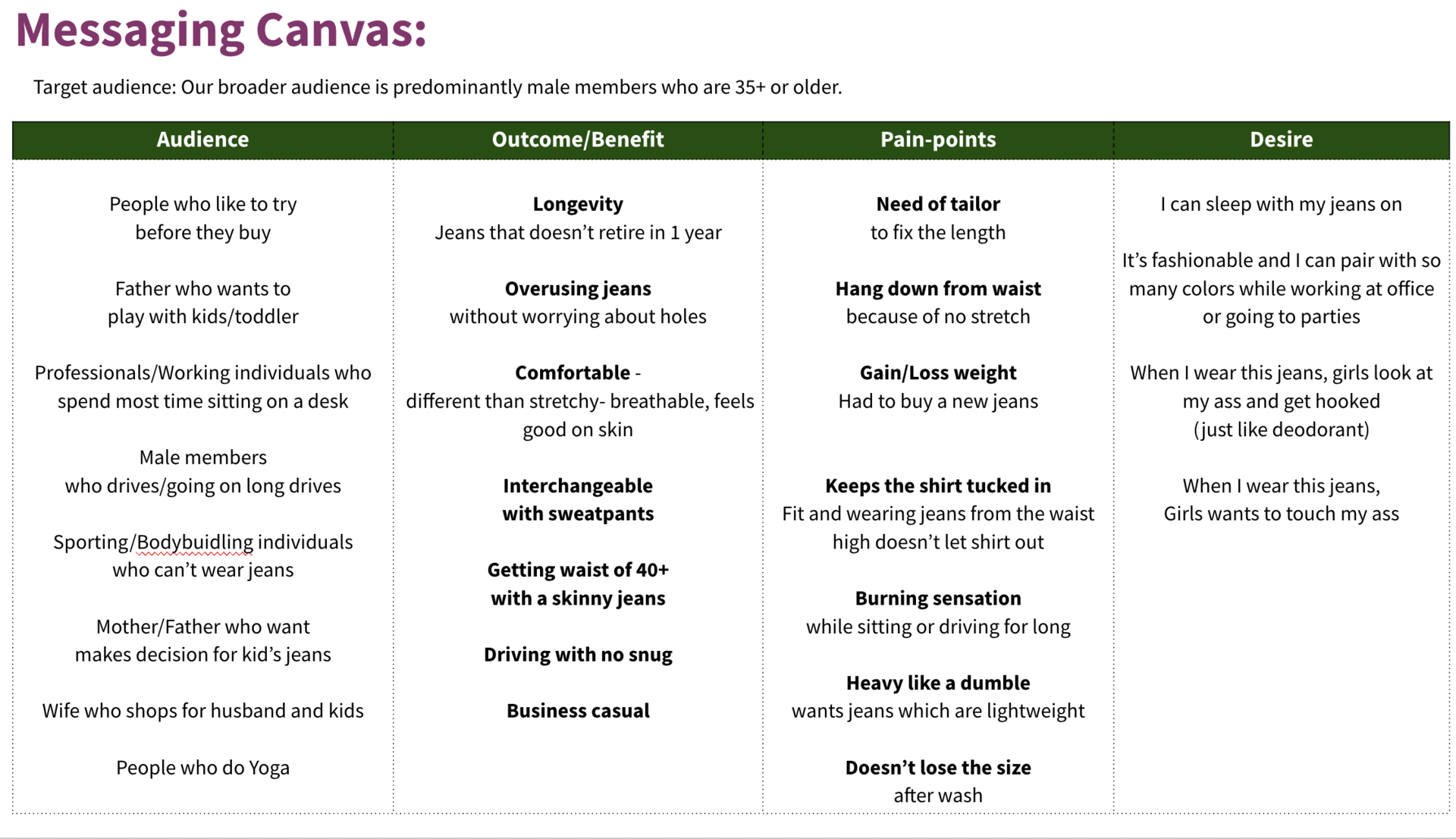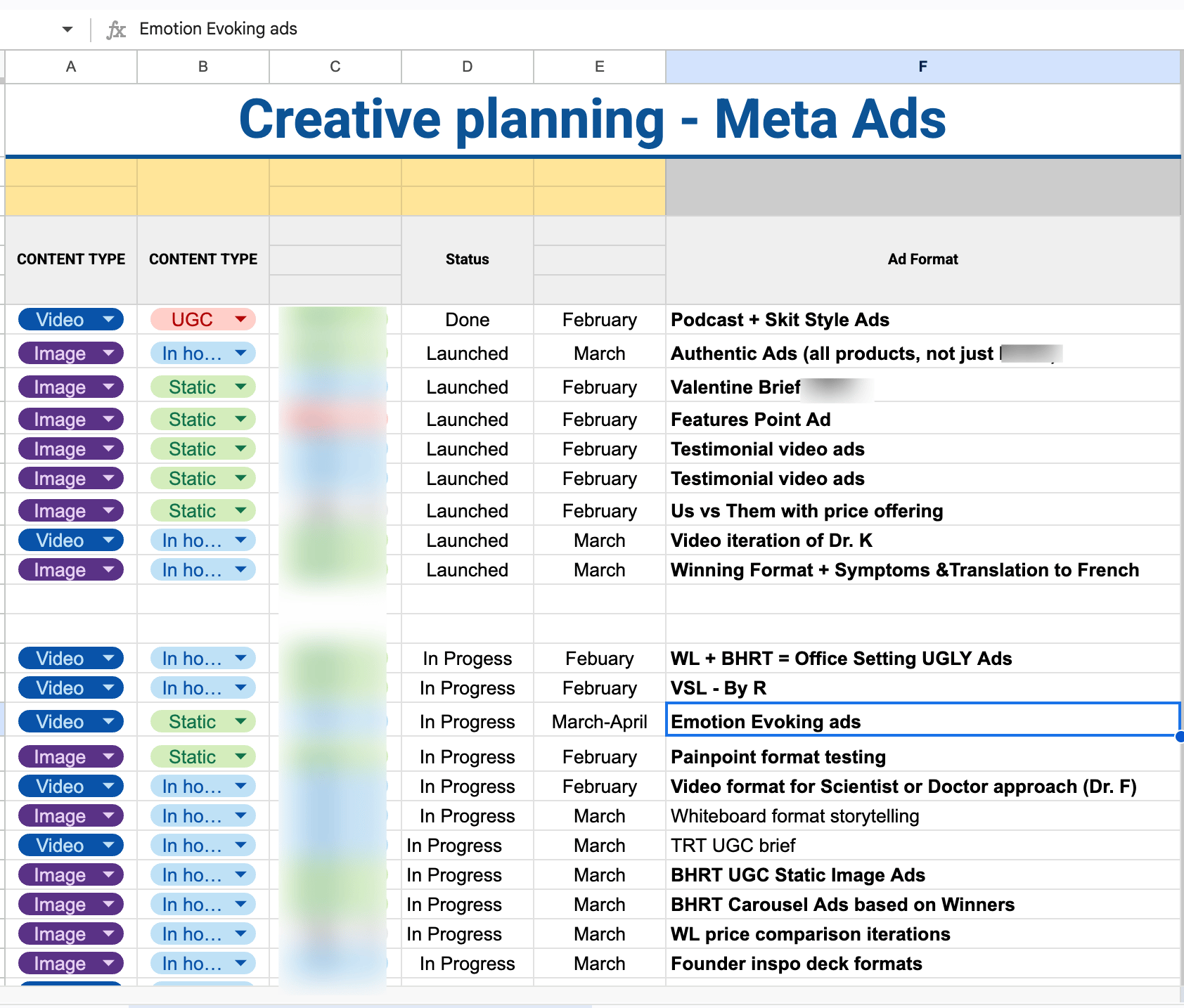- The Performers
- Posts
- How I’m Lowering My CAC Using AI + Creative Testing
How I’m Lowering My CAC Using AI + Creative Testing
How to Develop a Creative Strategy in Under 30 Minutes
Creative strategy used to take hours of research, brainstorming, and guesswork. Now, AI makes it possible to go from zero to testing-ready concepts in under 30 minutes.
It’s not about replacing your instincts, taste and judgement. It’s about speeding up every step of the process: research, messaging, angles, and formats.
In this breakdown, I’ll show you exactly how I use AI to build a data-backed creative strategy that lowers CAC and CPL while improving ROAS. The same framework we use across brands spending from $50K to $500K/month on Meta.
By the end, you’ll have a repeatable system to combine AI + creative testing to engineer lower CACs systematically.
(Bookmark today’s edition so you don’t lose the AI prompts I’m about to share).
Let’s get into it.
Step 1: Customer Research & Review Mining
Most brands skip this part and go straight into ad creation. That’s why their creatives flop.
If you want ads that lower CAC, you need to start with what customers actually say, not what you think they say.
Where to dig:
Reddit threads — People rant here without filters. Look for phrases like “I wish there was a product that…” or “I tried X but it…”.
Trustpilot, G2, or App Store reviews — You’ll find the good, the bad, and the “I almost didn’t buy because…” insights.
Amazon reviews — even if it’s a competitor’s product, you can see what people love and what drives them crazy.
YouTube comments — When people watch reviews or tutorials, their comments reveal hesitations and hidden desires.
Niche forums / Facebook groups — Highly specific problems and language show up here.
What you’re looking for:
Pain points → what frustrates them?
Objections → what stops them from buying?
Desires → what outcome excites them?
Language → the exact words they use (this is gold for ad copy).
Example: If you were selling sleep earplugs, review mining might reveal patterns like:
“I can’t focus in noisy cafés.”
“Finally, I can sleep while traveling.”
“I didn’t buy at first because they looked uncomfortable.”
That’s three ad angles right there: focus/productivity, travel, and comfort.
The mistake people make is treating review mining as “research notes.”
Instead, treat it as a library of ad hooks. Every line you pull out is potentially a headline, a script opener, or a testimonial-style creative.
Here is the prompt for this step:
Step 2: Talk to Sales/Support (or Listen to Calls)
This is where people get real. They ask the questions they’re too embarrassed to post online. They reveal the tiny doubts that stall a purchase. And give you the exact words.
Why this matters:
Sales calls surface objections in real time.
They reveal triggers — the moment a prospect flips from “maybe” to “yes.”
They show you patterns across different types of customers.
If you’re running ads for your own brand → talk to your sales or support team.
If you’re working with a client → push to get their sales recordings.
What to look for:
Top objections: too expensive, not sure it works for me, I tried something similar before.
Buying signals: “How soon can I start?” “Does it work if I [specific use case]?”
Unexpected language: the words customers use often aren’t the ones you’d write in an ad. Sometimes, the exact messy phrasing from a call makes the best hook.
Example:
A skincare brand’s sales calls might reveal lines like:
“I’ve wasted money on creams that did nothing.” → Ad angle: “Stop wasting money on skincare that doesn’t work.”
“I don’t want to look like I’m wearing makeup.” → Ad angle: “Look natural, without the heavy cover-ups.”
This is why sales calls are gold. They don’t just give you “content ideas.” They give you conversion-ready messaging straight from your customer’s mouth.
Here is the prompt for this step:
Step 3: Demographics, Psychographics & Lifestyles
Here’s the trap most advertisers fall into:
They stop at demographics. “Our target is women, 25–40, living in cities, with disposable income.”
That’s not a creative strategy. That’s just a persona.
If you want to lower CAC, you need to go deeper:
Demographics → basics like age, gender, income, location.
Psychographics → motivations, values, and identities. What do they believe about themselves?
Lifestyles & verticals → specific settings where your product shows up in their life.
Example: ALO Yoga
ALO isn’t just “yoga wear.”
Demographic view: women 22–38, fitness-focused.
Psychographic view: they want to look stylish and feel like part of a wellness community.
Lifestyle view: gym → sauna → beach → brunch. Same product, 4 completely different creative angles.
Example: Loop Earplugs
Loop nailed this with micro-targeting. They didn’t run one generic “better earplugs” campaign. Instead, they sliced the audience into:
Parents who want quiet at home.
ADHD community struggling with focus.
Festival-goers who want music without ringing ears.
Office workers stressed by distractions.
Frequent travelers who can’t sleep on planes.
Each of those angles are use-case-based storytelling.
Why this works:
It makes your product feel tailor-made for someone’s exact problem.
It multiplies your ad angles. One product suddenly has 10–15 unique use cases to test.
It helps you reach micro-tribes that respond to personalized language, lowering CAC.
If you stop at demographics, your ads sound generic.
If you dig into psychographics and lifestyles, your ads feel personal.
Here is the prompt for this step:
Bonus: Use Atria to spy on the personas, emotions, and desires your competitors are targeting.
Thanks to our partners who support this newsletter.
Tools worth checking out:
Atria: You're only as good an advertiser as your swipe file. Atria helps save good ads and analyze them in-depth. But the best part? Their AI helps me create concepts and scripts within seconds. Check it out for free. Most importantly, they now have built-in ad analytics to make more winning ads.
Step 4: Build a Messaging Canvas
Research without structure is just a messy Google Doc.
You need a way to translate customer insights into clear messaging pillars you can test across creatives.
That’s where the Messaging Canvas comes in.
I like to break it into 6 buckets (and for this section, I’ll use Loop Earplugs as the example):
Audience profile-based → Who this is for
“For parents who can’t get a full night’s sleep.”
Outcomes → What they’ll achieve
“Sleep peacefully anywhere.”
Benefits & futures → What life looks like after
“Wake up fresh, not drained.”
Jobs to be done / use cases → Practical contexts
“Study in a noisy café.” “Focus during deep work.”
Pain points → Frustrations you’re solving
“Tired of thin walls and loud neighbors?”
Selfish unspoken desires → The stuff customers don’t say out loud
“Look stylish while wearing earplugs.”
“Be the person who is always focused.”
Notice how one product (Loop) gives you dozens of different ad angles once you run it through the canvas.
Most brands stop at “benefits.” But it’s often the selfish, unspoken desires that create the lowest CAC ads, because they tap into the emotion behind the purchase.
We made something similar for The Perfect Jean Brand once we went through the audit.

Here are the prompts for this step:
Step 5: Ad Formats & Creative Angles

This real image working for a client
Once you know what to say, the next step is deciding how to say it.
This is where creative testing really makes or breaks CAC.
The goal isn’t to make one perfect ad.
It’s to build a range of formats and angles so you can see what resonates fastest and scale the winners.
Here are the core formats to test for static:
Us vs Them
Founder ads
Press screenshot ads
Old vs New
UX familiarity ads
Before & After
Stats grid
Testimonial ads
Meme ads
For video formats, rotate through:
Skits
Tutorials
Founder story
Myth-busting
Podcast-style
Comedy
Exaggeration
Video Sales Letters (VSL)
The point: one message can live across multiple formats. That’s how you multiply your testing power without reinventing the wheel.
Creative fatigue sets in when you test one idea in one format. You lower CAC when you test multiple ideas in multiple formats.
Here are the prompts for this step:
Step 6: Offers That Cut CAC Further
Strong creative lowers CAC.
But strong offers push it down even more.
The reality is:
Ads get people interested.
Offers get them to take action.
You don’t always need a massive discount. Small, smart tweaks in the offer can change the conversion math completely.
Some proven levers to test:
Bundles (“Buy 2, get 1 free”)
Limited-time discounts
Coupons for referrals or first purchase
Free trial extensions or bonus add-ons
“Buy more, save more” pricing tiers
The key: your offer should feel valuable without destroying your margins.
When paired with the right creative, even a simple offer can tip the scales and drive down CAC.
Here is the prompt for this step (Inspired by Alex Hormozi’s $100 Million Offers):
The Formula
At the end of the day, lowering CAC is about running a systematic process.
The formula looks like this:
Lower CAC = Right Message × Multiple Formats × Strong Offer
AI doesn’t replace strategy.
But it makes the whole system faster and sharper:
Research that once took weeks now takes hours.
Messaging variations that used to burn out your copywriter can be generated in minutes.
Testing multiple ad formats is no longer a bandwidth problem.
When you run this process consistently, you stop guessing. You stop chasing “one-hit-wonder” creatives.
And you start engineering ads that keep scaling while CAC goes down.
That’s how you win.
Four ways I can help you, whenever you are ready:
Work with me to get you growth from paid marketing. Book a call here. I’m open to more clients now.
Level up your paid marketing by joining my community, where we share the latest tactics and get nuanced paid marketing questions answered here (we are now 92+).
Promote yourself to 15,000+ highly qualified paid marketers by sponsoring this newsletter. Advertise here.
If you’re looking to level up your creative ad strategy, check out our bootcamp recordings and resources on-demand, only for $197. Prices are going up by 30% soon. Simply pay here, I’ll send you a follow-up email immediately.


Reply